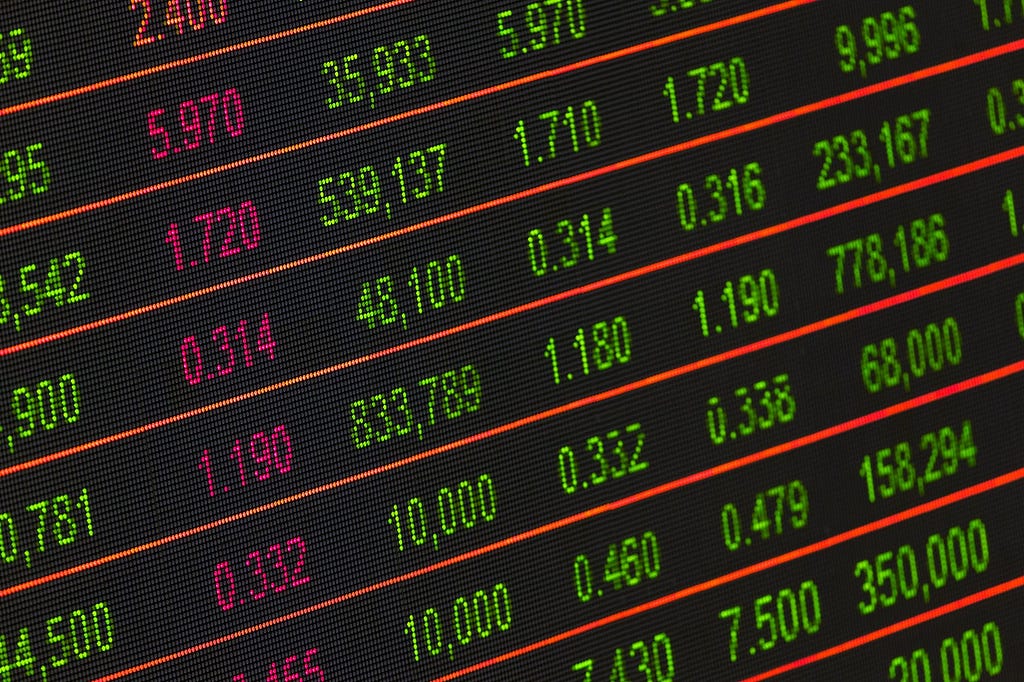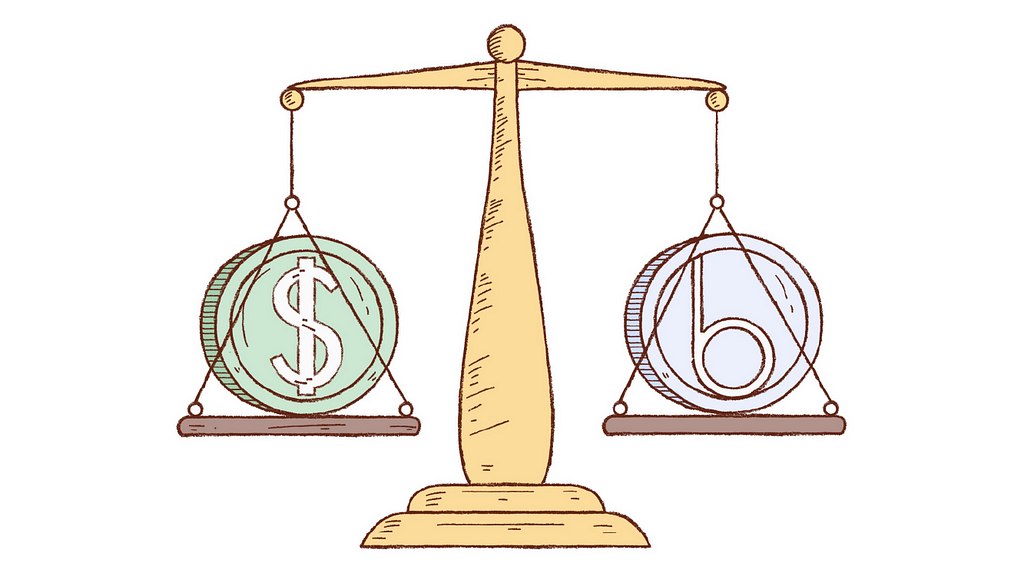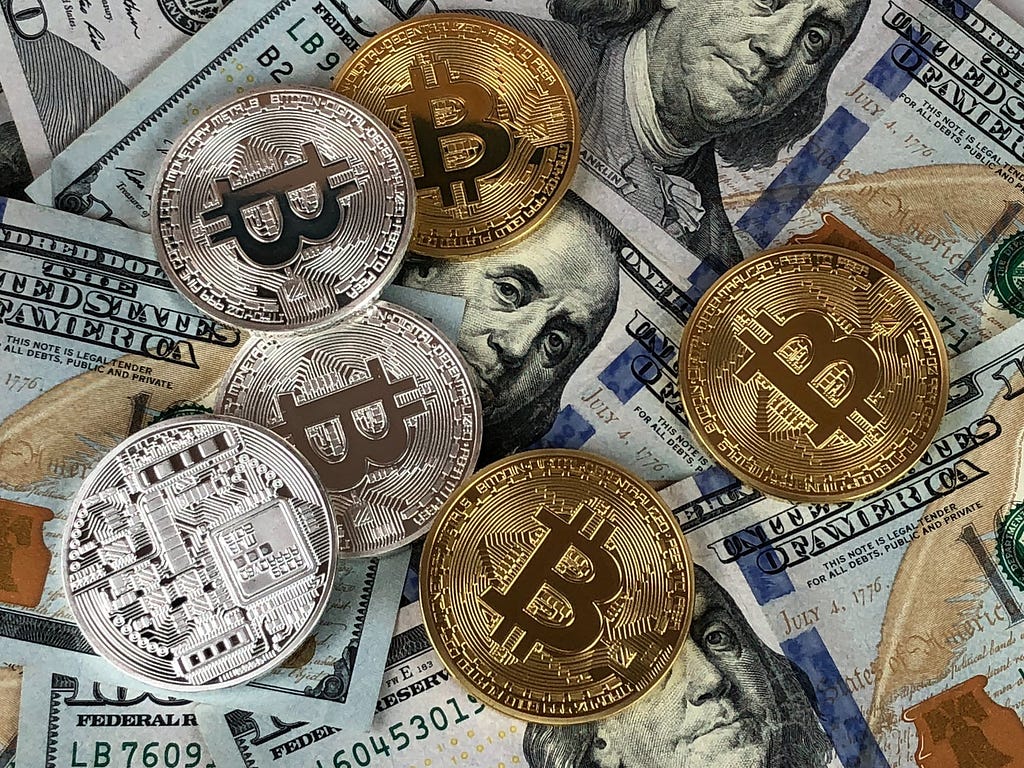Latest news about Bitcoin and all cryptocurrencies. Your daily crypto news habit.
In cryptocurrency, most avid traders prefer having an option for stability to trade out of their volatile holdings while still maintaining decentralized assets that avoid the need to exchange into Fiat currency. We traders sometimes need a period of rest for our crypto portfolios to not have the potential to significantly increase or decrease in value. This is exactly what the appropriately named stablecoins allow us to accomplish.
These crypto tokens are designed to peg their values closely to the value of various currencies, such as the ever popular dollar, at an approximate 1:1 ratio. By doing so, cryptocurrency traders are able to use them as a means of exchange in order to essentially liquidate their other volatile cryptocurrencies. Doing so negates the risk of major price fluctuations in their portfolios.
The availability of stablecoins is still just two and a half years old, and the power that they hold are entirely up to the markets. But, According to Phil Glazer at Bitwise Asset Management, he believes that as time goes on, a successful cryptocurrency that has a fixed price relative to our main Fiat currencies will have a major positive effect on cryptocurrency as a whole. He states,
“A fixed price cryptocurrency would enable a greater number of use cases than current cryptocurrencies allow. At the moment, cryptocurrencies are primarily held by investors and speculators seeking to profit from price appreciation. Few people hold and use cryptocurrencies like they would US dollars (receiving a salary, paying for groceries, etc.) because prices fluctuate significantly day-to-day.”
In the current landscape of cryptocurrency exchanges, only a select number of cryptoassets can be exchanged for currently tradeable stablecoins. Trading pairs involving stablecoins are some of the most heavily exchanged. In fact, the combination of trading USDT (aka Tether, which I’ll talk about more later in this piece) for Bitcoin is currently the most popular trading pair among exchanges where this pair is offered.
Why is USDT so highly exchanged when its value intentionally doesn’t garner a profit or loss? Well, stablecoins are, by design, not the roller coaster ride in value the way most other cryptocurrencies are, and that is precisely what gives them appeal. If you are riding recent highs in Bitcoin and decide it’s time to sell off a portion of them temporarily, Tether allows you to do so at Bitcoin’s market price. If BTC loses 15% of its value relative to the dollar the following day, your holdings that were converted to Tether did not actually lose any value.
Tether and other stablecoins allow you to essentially “sit out” from the market highs and lows any time you please, and be comfortable knowing those coins do not change in value relative to the dollar.
The existence of stablecoins on exchanges allows traders to cycle in and out of positions in Bitcoin and other volatile coins with ease while keeping their holdings out of the centralized bank systems. Swapping heavily volatile coins like Bitcoin for the least volatile coins available (stablecoins) on an exchange any time the trader so chooses is a huge advantage for anyone looking to de-risk and protect their portfolio values for any given timeframe. Investors and traders need stability in their own holdings on and off in order to counter the large spikes in crypto market volatility that occurs on both short-term and long-term time scales. They also need a quick way to exit and enter their positions when major news occurs and prices may react at a moment’s notice.
But why can’t we simply convert any of our cryptocurrency holdings to actual US dollars at the drop of a hat? Why do we even need a specialized stable token designed to replicate the true value of the US dollar around the clock? We already have something that is easily used for exchanging goods and services, both in person and on the internet. It’s called the dollar. And additionally, traditional stocks and equities can be bought and sold using USD in just about every online brokerage out there. However, there are a couple reasons that stablecoins are alternatively offered by most exchanges:
- There are no money transmission laws applicable to sending cryptocurrency from one location to another. The same cannot be said about the dollar.
- The overwhelming majority of altcoins simply do not have the volume and following yet for exchanges to justify offering direct fiat buying and selling. But remember that the keyword is “yet”.
- From a global perspective, there are many countries experiencing hyperinflation that have crypto traders looking for ways to easily exchange their holdings for something pegged to the value of the US dollar. In countries like Nigeria or Egypt, the volatility of their country-based currencies far outweigh the dollar, making Tether a convenient, easy, and uncomplicated option to trade for and convert their own volatile currencies into.
The Not so Stable History of Crypto’s Top Stablecoin
The often notorious and polarizing Tether coin (USDT) has been around and circulated through cryptocurrency exchanges and wallets around the globe since early 2016. The questionable aspect to the world’s currently most traded stablecoin lies with their concerningly underwhelming track record regarding their transparency of their fund backing. The coin’s team claims that each USDT coin is backed by a dollar of hard currency reserves. However, only grainy, highly questioned evidence has been provided to disprove the notion that they do not have all of their tokens backed by real dollars. Bringing forth evidence of hard USD currency backing through periodic audits of the company would alleviate concerns and instill confidence in traders’ minds.
Frequent inquiries for proof of this claim have been met with mostly radio silence from the Tether team. As of June 1, 2018, the stablecoin had a market cap of an astonishing $2.55 billion. Shortly after this date, a transparency report was released with the backing of law firm Freeh Sporkin & Sullivan LLP that unofficially stated that their investigation found Tether to have the fund backing they claimed. The company was supposedly investigated by the law firm without warning, and it was announced that Tether’s bank account records exceeded its June 1st market cap by $7 million, thus indicating that it has full backing of its market supply of tokens. However, the vagueness and lack of many specific details of this report only temporarily silenced critics.
A week prior to the time of this writing, Bloomberg conducted an investigative report that heavily questioned Tether’s transparency report. In it, they noted that the popular cryptocurrency exchange, Kraken, has been the host to numerous suspicious Tether trades, many of which are indicative signs of blatant market manipulation. Wash trading and very specific trade amounts have been triggered and met with almost no temporary price movements in the overall value of Tether. It is unclear whether there are people associated with Tether or the exchange who have anything to do with these market manipulation tactics, but it seems as though Tether at least would have knowledge of these trades based on the lack of price movement to numbers that would normally move the value of their coin considerably.
Wash trading is the act of both buying and selling a coin simultaneously in order to mislead traders into assuming false information about a specific coin or entire market. Many suspect that these peculiar trades have occurred on the exchange without proper price movement. As a result of these scandals and several others involving the largest stablecoin, red flags are up, and Tether remains controversial as a legitimate stablecoin.
Yes, as I stated earlier in this article, stablecoins are designed to not have significant price movement. However, several who have looked into the matter have conclouded that these significant trades should be at least temporarily moving the price of Tether to around $1.10, which would cause Tether to issue more coins into circulation and inevitably bring their value back to the intended $1.00. Instead, the price has only seemed to range from approximately $0.99 to $1.01, causing analysts to question if these orders are actually real or just showing up in order books to create false impressions of heavy market demand.
In addition, the Bloomberg report referenced a passage by University of Texas professor John Griffin, who said that there are some very specific orders that are “suggestive of wash trading”.
On top of all the confusion surrounding this so-called transparency report and the abundance of polarizing opinions it received, there had already been a $33 million hack of Tether coins in November, 2017. This opened doors to questions regarding the safety, vulnerabilities, and susceptibility to future security breaches of a coin that ironically is intended to instill a sense of calm in surrounding heavily fluctuating markets.
Despite the lack of fund backed evidence, which would be a major concern in virtually any other investable sector in the world, Tether is still a highly owned token constantly being exchanged throughout the cryptocurrency world. Not only that, but many are unaware that US Tether (USDT) is currently the second most traded cryptocurrency behind only Bitcoin. Stablecoins can also be used as helpful market indicators regarding the overall sentiment of the market based on how they are being traded. According to Joseph Young, an analyst at News BTC,
“The daily trading volume of USDT can be considered as a direct representation of the volatility in the cryptocurrency market; if the volume of Tether is abnormally large in a downward trend, it signifies that traders are selling cryptocurrencies to USDT, and if the volume of Tether is unusually large in a bull market, it demonstrates that traders are selling their USDT reserves to acquire more cryptocurrencies.”
Available Stablecoin Options
Lately, many exchanges have been following Coinbase’s footsteps and slowly implementing USD trading for top traded coins like Bitcoin and Ethereum. But trading into centralized Fiat currencies is not exactly a great option if you are a believer in decentralized currency as the future. These fiat-pegged stablecoins I will be listing below are intended to be a convenience for users to exchange, not a burden that traders should feel forced into as an alternative to US dollars. There are three main types of stablecoins that currently are available for traders to get their hands on:
- Fiat collateralized coins are coins that have a central entity that holds the equivalent amount of currency they intend to represent in currency. These fund-backed tokens are expected to be based on the reserve of fiat currency that allows them to place the appropriate 1:1 ratio between the value of a single token and a single dollar. Examples of these coins are:
- Tether (USDT), the leading stablecoin which I have already discussed in depth, has been circulating on exchanges since early 2016. Originally known as Realcoin, it is currently the largest asset backed token that acts as a link between crypto and fiat. Due to security and liquidity issues regarding their dollar reserves, external audit intentions by the company that so far have yet to exist, and a theft of $31 million USDT in November 2017 that caused a temporary cease of trading, their reputation has taken a minor, but not yet devastating hit.
- True USD (TUSD) is a relatively new fiat collateralized option for investors that is already available on several exchanges. They have capitalized on the controversy surrounding USDT, and they attempt to address particulars that people worry about with Tether, such as transparency of assets through daily proof of bank account information and monthly audits. TUSD was created with the intention of solving a few use cases, such as financial services and online commerce. They ideally see themselves as a replacement for USD on crypto exchanges. And for what it’s worth, the tokens run on the Ethereum blockchain as opposed to Tether’s Bitcoin blockchain.
- Cryptocurrency collateralized stablecoins are the decentralized answer to fiat collateralized coins. Instead of being backed by Fiat currency, these coins are backed by actual cryptocurrency, such as Bitcoin or Ethereum and the use of smart contracts:
- Maker Dao (DAI) has some similarities to Tether and other stable coins, such as their soft-pegged price to a US dollar, non-minable nature, and collateral-backed asset type. However, instead of being backed by fiat US dollars, DAI uses overcollateralized Ethereum smart contracts. It is also issued on the Ethereum blockchain, as opposed to the Bitcoin blockchain. Their use case intends to lend toward four markets:
- Gambling markets
- Financial markets
- International trade
- Transparent accounting systems
- BitUSD (BITUSD) is an interesting price-stable cryptocurrency, as it is backed by the BitShares core currency, BTS. Traders have the ability to convert them to an exchange rate that is dependent on their “trustworthy price feed” that is based on the median of several sources which are updated hourly. An intriguing claim by BITUSD is that their token is always expected to be worth at least $1.00, which would imply that the coin has the ability to be worth at least one US dollar at all times, but never less. We have already seen USDT and TUSD have a value below one dollar, so this would be a very valuable aspect of a stablecoin. However, keep in mind that they are used exclusively to buy BitShares, making converting to Fiat more tedious than alternative options.
- Non-collateralized stablecoins are interesting in the fact that there is no collateral backing associated with these types of coins. These coins usually implement an algorithm or some form of an expanding and contracting supply of its own value, which is based on the price and demand of it by traders.
- Basis is an upcoming non-collateralized stablecoin that algorithmically adjusts its own supply based on the demand it is receiving in order to accurately peg itself to the value of a dollar without any need for a fiat or crypto backing. I will be releasing a feature article on this coin shortly as it gets closer to its public availability. Many consider the idea of it to be revolutionary to the crypto world, and if successful, could become an actual threat to the Federal Reserve and its centralized monetary policy.
- Havven (XAV), which claims to be untraceable, is a fork of the popular privacy coin, Monero (XMR). The coin works by implementing a “mint and burn” system which takes a transaction from a user’s wallet that they trigger, and sends it to a smart contract that in turn retains the Haven’s value at the moment of transaction. This balance stays on the blockchain, and is impossible to track back to the person making the transaction. By using this unique method, XHV’s use case allows users to send funds to offshore storage contract, while simultaneously being able to retain blockchain fund value to give the user the ability to trade their Haven and respond to market fluctuations.
In addition to the several tokens I have named, there are also several other stablecoins that are expected to be made readily available for cryptocurrency traders in the near future, including Kowala, Augmint, and Carbon. With several existing, emerging, and soon to be planned options in the stablecoin landscape, traders and investors have some options moving forward in how to prevent portions of their crypto portfolios from violently fluctuating. If stablecoins are able to accomplish what is expected and required of them (maintaining stability in an extremely volatile sector) without doubts in their validity, their existence will be a major boon for cryptocurrency.
Mass adoption of crypto in general will be an extreme uphill battle without these safe, reliable stablecoins for traders to buy and sell in and out of when waters get choppy. The currency-pegged tokens will open wide doors for Bitcoin, Ethereum, and other top coins if they are able to scale to a global audience. Chrisjan Pauw, an author at Cointelegraph, states,
“For truly decentralized stablecoins to work, there must also be a system in place that can reliably obtain the exchange rate between the stablecoin and the pegged asset, without leaning on third-party institutions that can be manipulated.”
This is precisely what we need from a stablecoin to lift up all of cryptocurrency, and we will see in the months and years to come how well these coins can execute the goals that they set out to accomplish.
I write in depth cryptocurrency analysis at Samsa, the passive investing tool for crypto. See what we’re doing at Samsa.ai and see our other analysis at our magazine. If you love what you see, give this article 50 claps! If you hate it, show your displeasure with 49.
This article and related content is for informational purposes only. It should not be considered investment advice, and you should consult a financial advisor and do your own research and due diligence prior to making any investments. Where securities or commodities are referenced, it is only for illustrative purposes only, and does not imply any position on securities or commodities classification. To the extent that Samsa services are offered or discussed, those services are available only for Samsa whitelisted assets only.
Stablecoins — Carrying the Way to the Cryptocurrency Promised Land was originally published in Hacker Noon on Medium, where people are continuing the conversation by highlighting and responding to this story.
Disclaimer
The views and opinions expressed in this article are solely those of the authors and do not reflect the views of Bitcoin Insider. Every investment and trading move involves risk - this is especially true for cryptocurrencies given their volatility. We strongly advise our readers to conduct their own research when making a decision.









